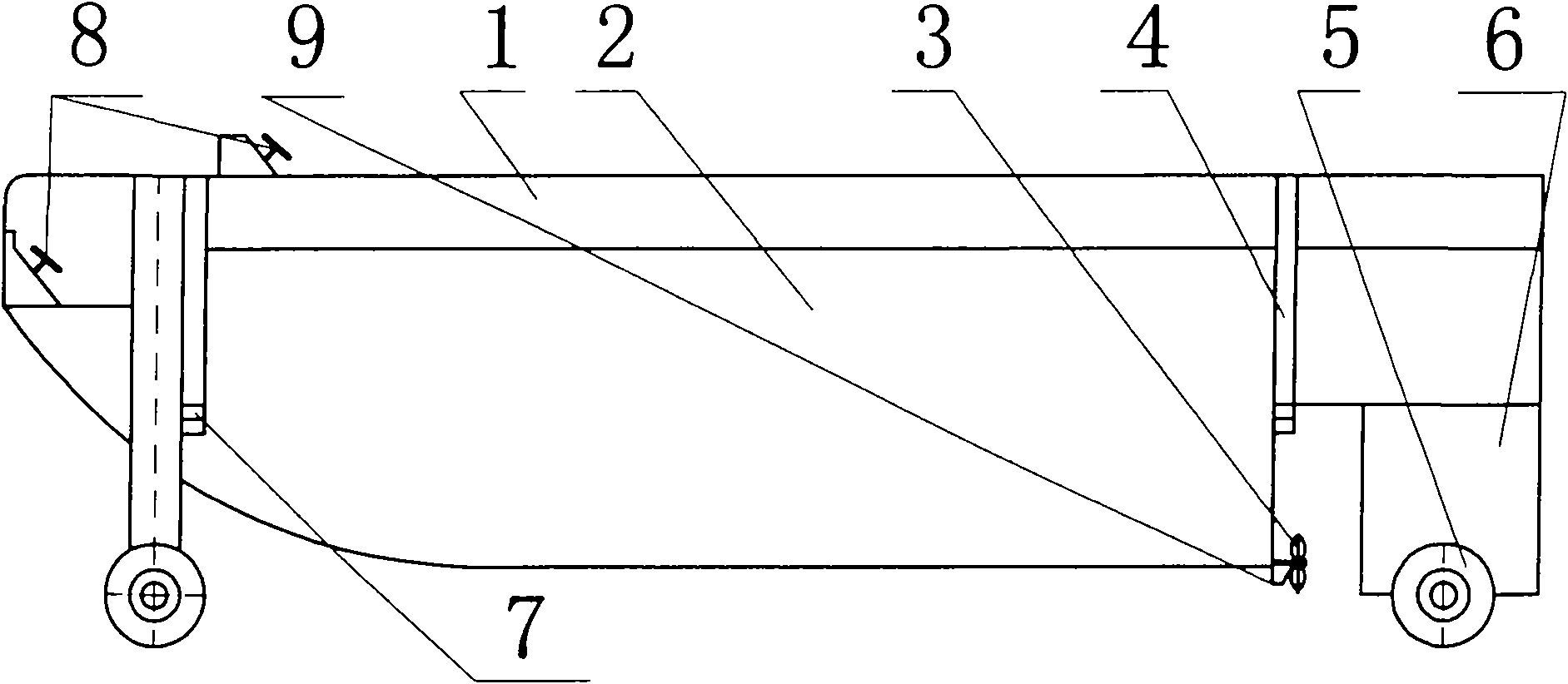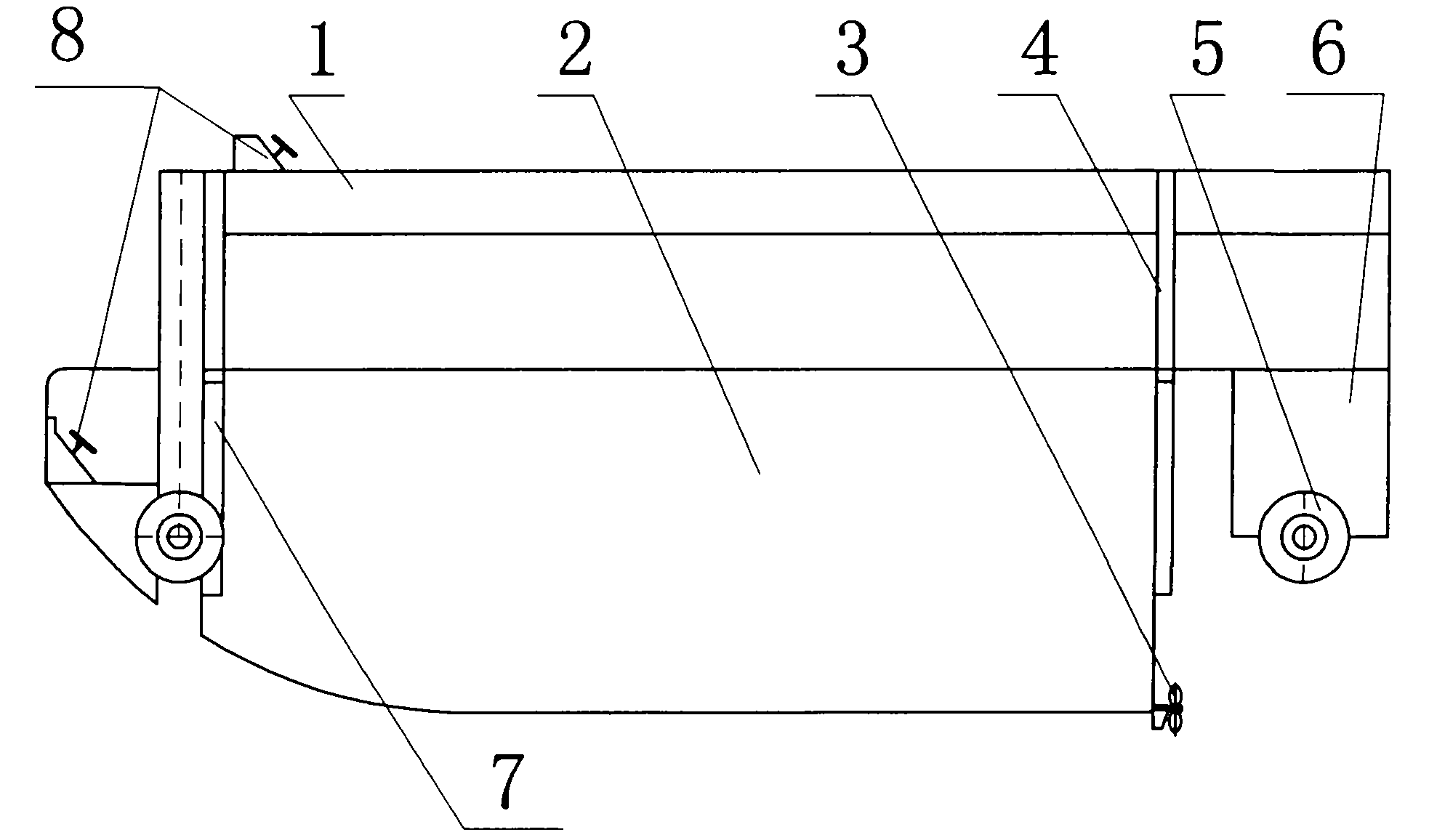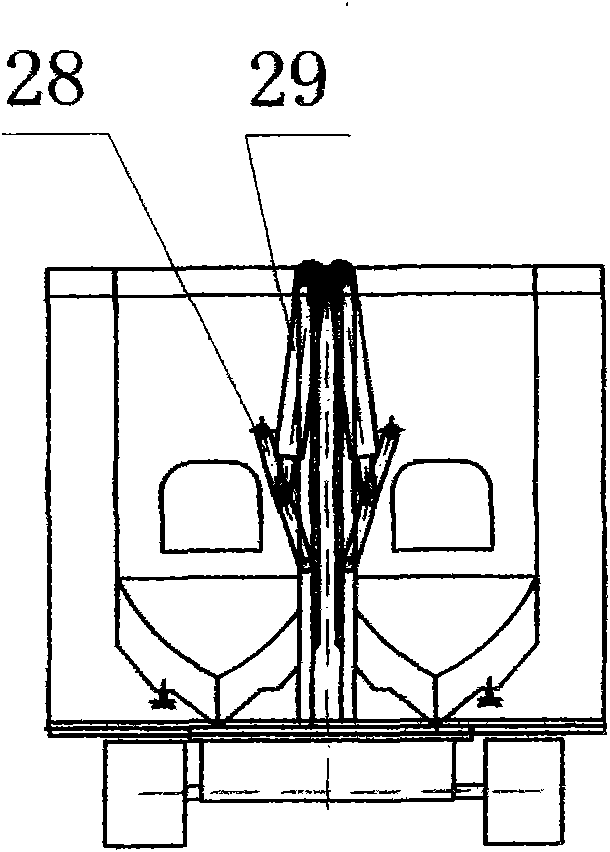Amphibious vehicle
An amphibious, land-based technology, applied in amphibious vehicles, motor vehicles, transportation and packaging, etc., can solve the problems of low reliability, high cost, large air resistance, etc., and achieve high reliability, low resistance and low cost. Effect
- Summary
- Abstract
- Description
- Claims
- Application Information
AI Technical Summary
Problems solved by technology
Method used
Image
Examples
Embodiment Construction
[0062] attached figure 1 and 2 Shown in is a wheeled amphibious boat with a rear engine compartment.
[0063] In this embodiment, the land travel device 5 is composed of four wheels, and the frame chassis 1 adopts a rear engine and a rear wheel drive mode; the clutch lifting device 4 is composed of a hydraulic cylinder, and one end of the piston of the hydraulic cylinder 4 is assembled in a boat-shaped The compartments 2 are connected, and one end of the cylinder barrel of the hydraulic cylinder 4 is assembled on the chassis frame 1; the water propulsion device 3 is a propeller, and the propeller is assembled on the boat-shaped compartment 2; 3 Driven by the power unit in the boat-shaped carriage 2, when on land, the boat-shaped carriage 2 receives the middle and upper part of the wheel 5 through the clutch lifting device 4, and the amphibian is driven by the wheel 5; when in water, the boat-shaped carriage 2 passes through The clutch lifting device 4 descends, and the boat-...
PUM
 Login to View More
Login to View More Abstract
Description
Claims
Application Information
 Login to View More
Login to View More - R&D
- Intellectual Property
- Life Sciences
- Materials
- Tech Scout
- Unparalleled Data Quality
- Higher Quality Content
- 60% Fewer Hallucinations
Browse by: Latest US Patents, China's latest patents, Technical Efficacy Thesaurus, Application Domain, Technology Topic, Popular Technical Reports.
© 2025 PatSnap. All rights reserved.Legal|Privacy policy|Modern Slavery Act Transparency Statement|Sitemap|About US| Contact US: help@patsnap.com



